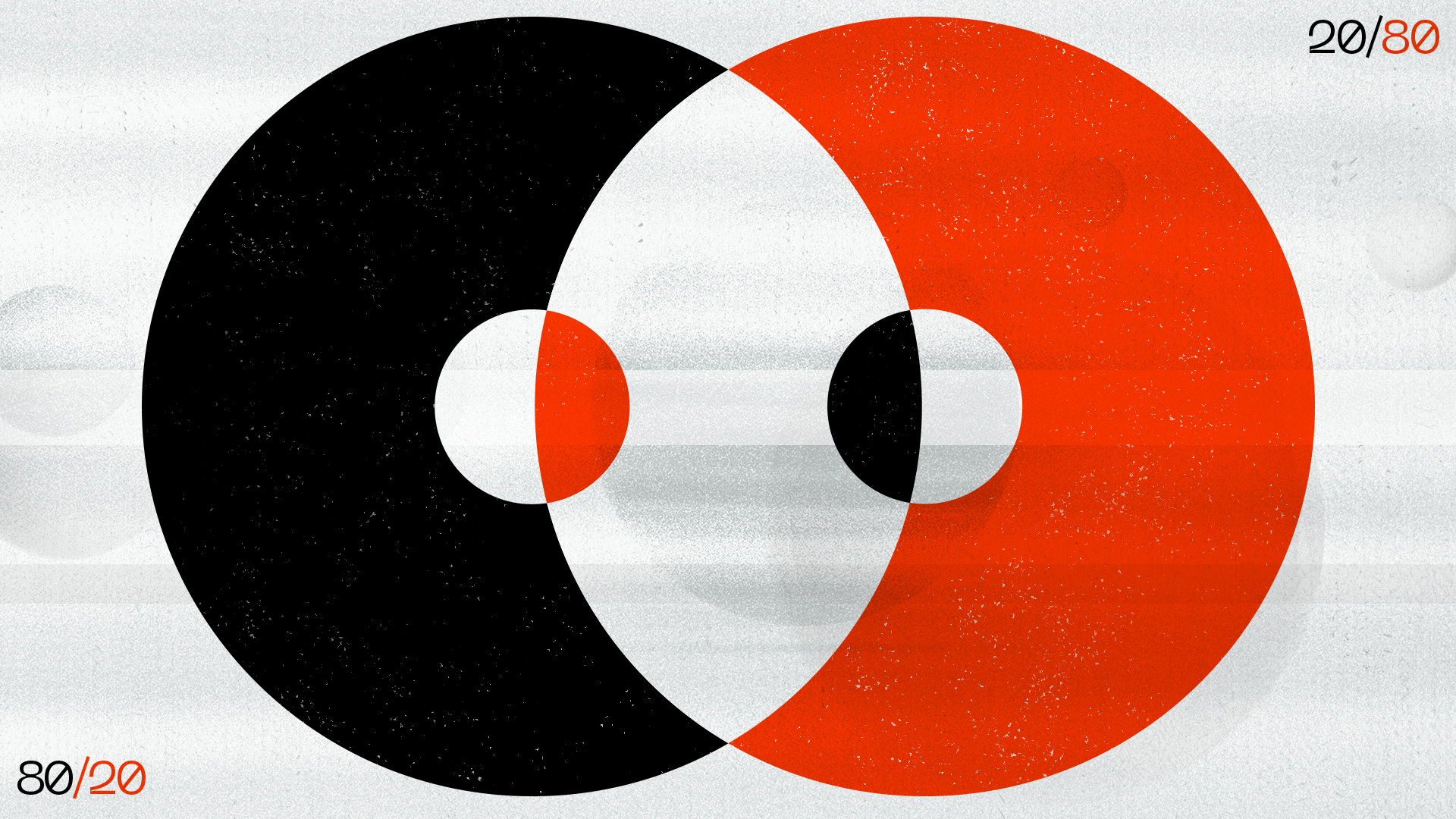The distinction between B2C and B2B marketing is a heavily covered topic across the marketing content sphere. A Google search of ‘the difference between B2B and B2C marketing’ yields content written by sources from LinkedIn to Hubspot to the U.S. Chamber of Commerce. And yet these pieces often obscure how the role of storytelling differs between the two.
Enter the 80/20/20/80 rule. This is our simple rule of thumb for how to begin differentiating between B2B and B2C marketing at launch.
When going to market with a B2B software solution, 80% of the brand story should consist of the product or platform itself. The solution must be effective in order to convince early adopters to sign up and begin building your install base. At this point only 20% of your marketing efforts should be focused on developing the particulars of the brand identity. At launch, buyers probably don’t care to hear about your origin, your personality, and the personal values of your innovators. Effectively–your product is your brand, and only later in the business cycle does the brand ethos story begin to encompass more than the product.
Case in point, the rapid rise of DocuSign, a B2B SaaS company that helps business people… sign documents. Even as a now-mature brand, precious little daylight exists between their brand and their primary product offering.
With B2C, the opposite rule is in effect. When a retail product goes into market, 80% of the story needs to focus on what this new brand means to the audience, and the associations it creates above and beyond the product function.
Obviously, if you’re selling shirts and you tell audiences ‘we sell shirts and they button, but this one zips!’ you’re not going to inspire a purchasing decision. So you need to develop a distinct brand story early, creating personal associations and emotional connections among buyers, to drive demand. In the case of many retail products, the solution is only as unique as the story behind it.
In 1989 two brothers, Bert and John Jacobs, started designing t-shirts and selling them out of a van. Does this sound like a start-up you’d invest in? Where’s the innovation? The differentiation? How are they building a moat around the competition?
And yet, through this powerful (and powerfully simple) brand narrative, the brothers Jacobs turned the Life is Good Company into a $130+ million retail empire:
“Optimism is a practice. It empowers us to navigate the hard stuff while choosing to focus more energy on the good stuff. Scientific research has shown it enhances well-being and bolsters our resilience. It also makes life a hell of a lot more fun.”
The product, in this case, is merely a reflection of their story – a philosophical approach to living tailor-made (pun intended) for apparel branding.
So as you approach your B2B or B2C branding project, remember our 80/20/20/80 rule when first going to market:
B2B:
- 80% product
- 20% brand
B2C:
- 20% product
- 80% brand
From there, you’ll begin to craft the right branding and marketing philosophy for your solution set.

